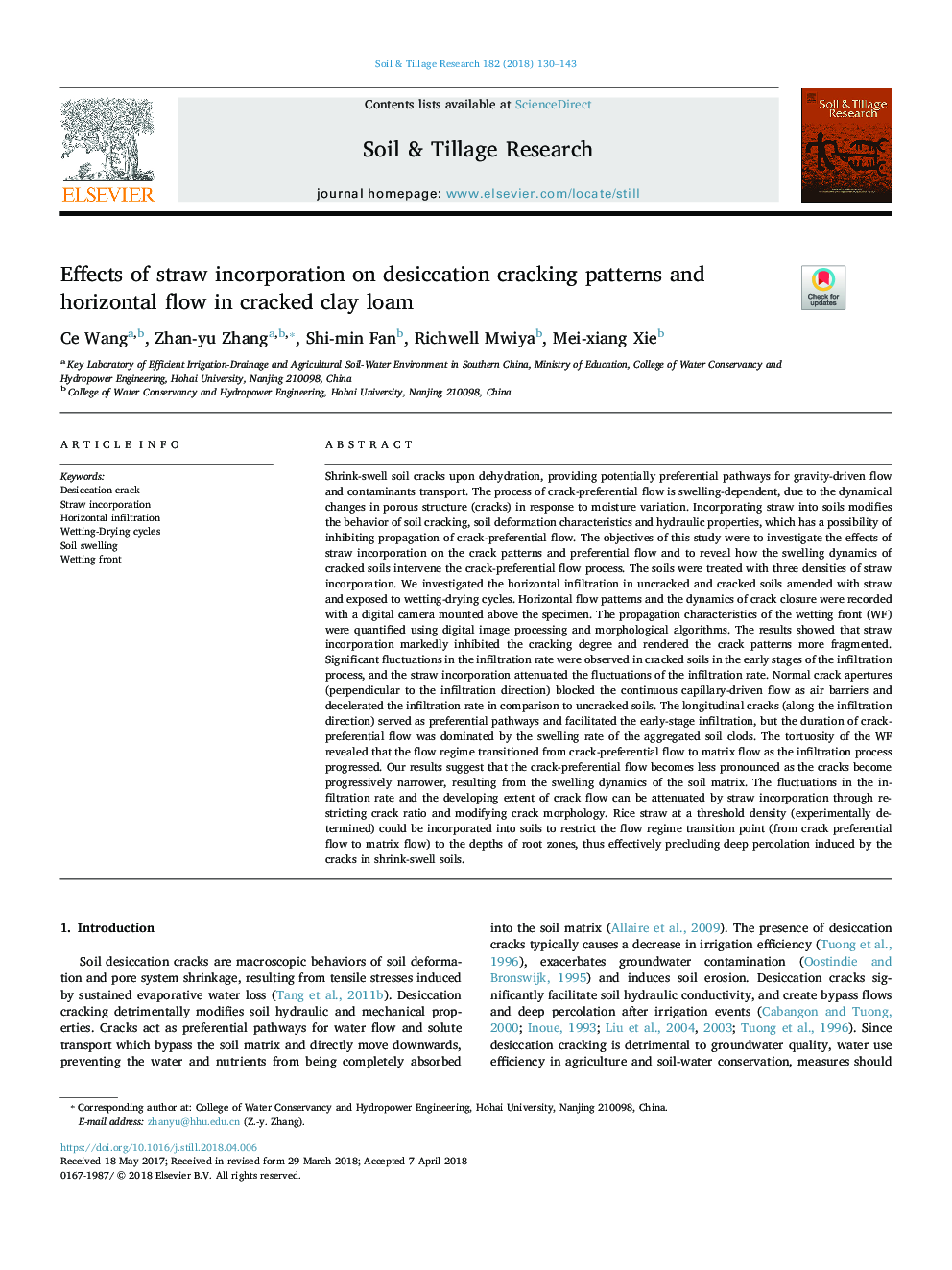| Article ID | Journal | Published Year | Pages | File Type |
|---|---|---|---|---|
| 6772985 | Soil and Tillage Research | 2018 | 14 Pages |
Abstract
Shrink-swell soil cracks upon dehydration, providing potentially preferential pathways for gravity-driven flow and contaminants transport. The process of crack-preferential flow is swelling-dependent, due to the dynamical changes in porous structure (cracks) in response to moisture variation. Incorporating straw into soils modifies the behavior of soil cracking, soil deformation characteristics and hydraulic properties, which has a possibility of inhibiting propagation of crack-preferential flow. The objectives of this study were to investigate the effects of straw incorporation on the crack patterns and preferential flow and to reveal how the swelling dynamics of cracked soils intervene the crack-preferential flow process. The soils were treated with three densities of straw incorporation. We investigated the horizontal infiltration in uncracked and cracked soils amended with straw and exposed to wetting-drying cycles. Horizontal flow patterns and the dynamics of crack closure were recorded with a digital camera mounted above the specimen. The propagation characteristics of the wetting front (WF) were quantified using digital image processing and morphological algorithms. The results showed that straw incorporation markedly inhibited the cracking degree and rendered the crack patterns more fragmented. Significant fluctuations in the infiltration rate were observed in cracked soils in the early stages of the infiltration process, and the straw incorporation attenuated the fluctuations of the infiltration rate. Normal crack apertures (perpendicular to the infiltration direction) blocked the continuous capillary-driven flow as air barriers and decelerated the infiltration rate in comparison to uncracked soils. The longitudinal cracks (along the infiltration direction) served as preferential pathways and facilitated the early-stage infiltration, but the duration of crack-preferential flow was dominated by the swelling rate of the aggregated soil clods. The tortuosity of the WF revealed that the flow regime transitioned from crack-preferential flow to matrix flow as the infiltration process progressed. Our results suggest that the crack-preferential flow becomes less pronounced as the cracks become progressively narrower, resulting from the swelling dynamics of the soil matrix. The fluctuations in the infiltration rate and the developing extent of crack flow can be attenuated by straw incorporation through restricting crack ratio and modifying crack morphology. Rice straw at a threshold density (experimentally determined) could be incorporated into soils to restrict the flow regime transition point (from crack preferential flow to matrix flow) to the depths of root zones, thus effectively precluding deep percolation induced by the cracks in shrink-swell soils.
Related Topics
Physical Sciences and Engineering
Energy
Renewable Energy, Sustainability and the Environment
Authors
Ce Wang, Zhan-yu Zhang, Shi-min Fan, Richwell Mwiya, Mei-xiang Xie,
